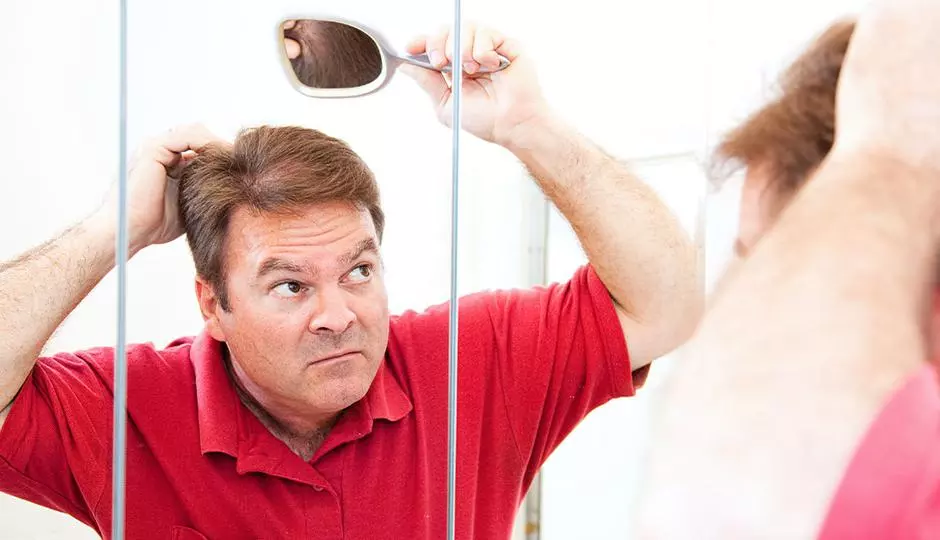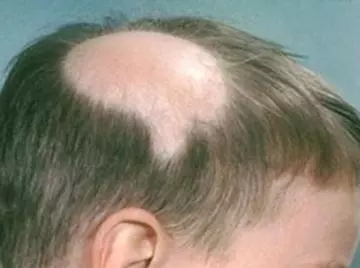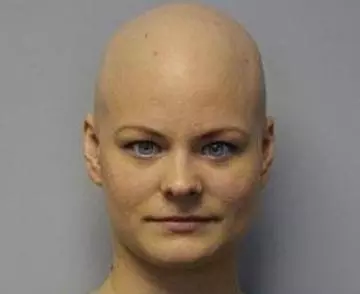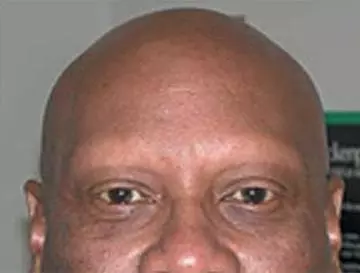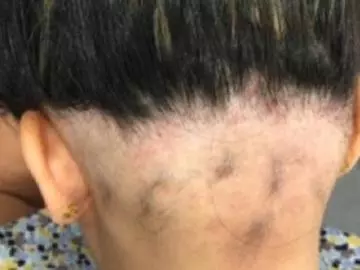There are many potential causes for hair loss, and one of the most significant is the condition known as alopecia areata or AA. More than 4.5 million people in the United States are estimated to be affected with AA, according to the National Alopecia Areata Foundation. In this post, we’ll take a look at what this condition is, how it is diagnosed, and ultimately how it is treated.
What is Alopecia Areata?
Alopecia Areata is a genetic, immune-mediated non-scarring disease targeting active growing (anagen) hair follicles which manifest as inflammation of the skin at the hair follicle bulb consequently blocking any growth of normal hair. This disorder typically leaves an area of the scalp “smooth as a baby’s bottom.” Although not life-threatening, AA could potentially affect all ethnic groups and males and females of all ages, bearing significant psychological implications, possibly leading to a high lifetime rate of generalized anxiety disorders or even depression.
What does it look like?
AA shows or “presents” itself in different ways – with hair loss customarily occurring as one of four main patterns:
- Round or oval patches of hair loss

- Loss of all scalp hair (alopecia totalis)

- Loss of all body hair (alopecia universalis)

- Ophiasis pattern alopecia areata (hair loss over the ears and over the back and lower part of the skull)

Although uncommon, there can also be diffuse or scattered scalp alopecia areata which may present with reduced hair density on the scalp but no “signature” patches.
How do I know if I have it?
AA is diagnosed either visually by the self-evident "presentation" of the disease sometimes seen using a trichoscopy (tool magnifying hair shafts at high resolutions) or via biopsy if the hair loss pattern is unclear. A biopsy sample allows for detection of the inflammatory process around the hair follicle bulb, and interestingly enough, the immune attack on hair follicles manages to spare white fibers, so often hair grows in as white hair indicating the disease is still active.
Is the Hair Loss Permanent?
Potentially yes, and no.
About 10% of patients with AA don’t regrow their hair.
The likelihood for regrowth decreases if:
- You have a family history of alopecia areata
- The disease has been present for a long period of time
- You develop the condition at a young age—e.g., before puberty
- You have a concurrent autoimmune disease
- The hair loss is extensive
But generally speaking, it is feasible for hair to grow back in alopecia areata patients through treatment.
Treatment
Historically speaking, a “best treatment" for AA has not existed with nearly all treatments aimed to suppress the underlying inflammation process, and unfortunately, the relapse of hair loss was relatively high. But this may be changing! In recent years new research, new studies, and new developments have propelled both encouraging treatment options and the understanding of AA.
Cholesterol Medication
You might assume any anti-inflammatory medication could treat AA. For example, NSAIDs are known to decrease inflammation, but they do not treat AA. However, the anti-inflammatory mechanism is different in another class of drugs, the family of cholesterol-lowering drugs, or statins. New studies administered utilizing statins to treat AA has shown exceptional promise, establishing that the particular inflammatory mechanism in any medication is paramount to treat AA. In one study, after treatment with statins for 24 weeks there was a 75% improvement in hair growth, and stopping the medication led to a significant proportion of the patients losing their hair.
Steroid Injections
It has been thought for some time injected steroids had more effectiveness than topical steroids, and based on further research this is now shown to be true. In one large study with 226 patients, 113 patients with AA had steroids injected, and 113 patients with AA used topical steroids. The injected group had a better outcome than the topical group.
Latisse
Glaucoma medications are frequently utilized to treat AA. Latisse, a product containing the exact same medication (bimatoprost) as glaucoma medication, has shown impressive results promoting AA eyebrow growth. In one case report, a 9-year-old who failed with minoxidil and steroids used one drop of bimatoprost (or Latisse) per patch bid and saw full regrowth at seven months.
JAK inhibitors
One other class of drugs has newly shown promise, indicating it could play a very significant role in AA treatment further establishing a hopeful future: janus kinase inhibitors. Two of these drugs, one treating rheumatoid arthritis, and the other treating bone cancer, both block the janus kinase pathways within cells. In one case report, the patient began regrowing hair by four weeks with significant regrowth by three months. Interestingly enough, new research is also progressing to develop JAK inhibitors in a topical form, because these treatment results have likewise proven positive.
CNC Hair System
For some patients, the result is still not what they desire. In those patients we offer a CNC hair system made by Cesare Ragazzi. It will give immediate coverage and density and enable the patient to live a full and active lifestyle.
At HT&RC we are here to accurately diagnose your problem and develop the best treatment options for you. If you think you may have alopecia areata or another form of hair loss, contact HT&RC to schedule a consultation.
